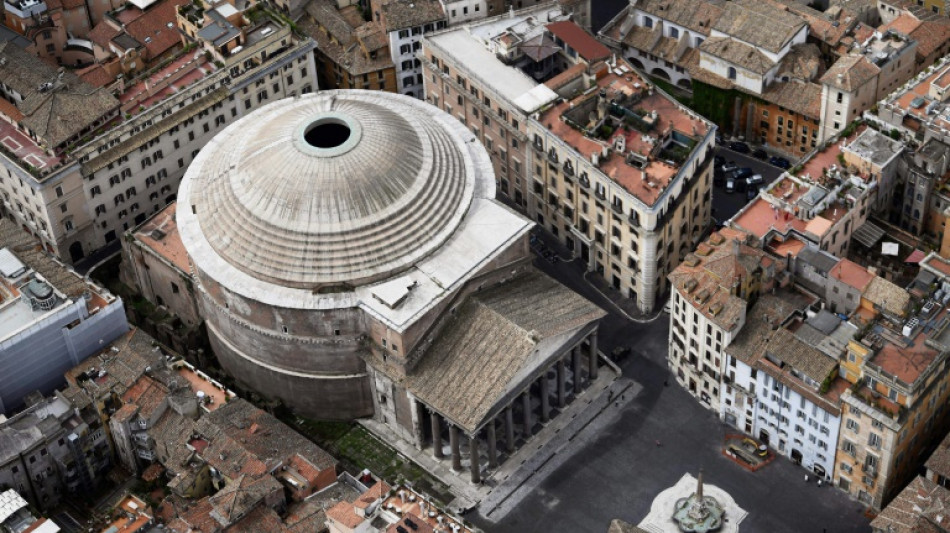
-
 'Western tech dominance fading' at Lisbon's Web Summit
'Western tech dominance fading' at Lisbon's Web Summit
-
Asian stocks rise as record US shutdown nears end

-
 'Joy to beloved motherland': N.Korea football glory fuels propaganda
'Joy to beloved motherland': N.Korea football glory fuels propaganda
-
Taiwan coastguard faces China's might near frontline islands

-
 Concentration of corporate power a 'huge' concern: UN rights chief
Concentration of corporate power a 'huge' concern: UN rights chief
-
Indian forensic teams scour deadly Delhi car explosion

-
 Trump says firebrand ally Greene has 'lost her way' after criticism
Trump says firebrand ally Greene has 'lost her way' after criticism
-
Show shines light on Mormons' unique place in US culture

-
 Ukraine, China's critical mineral dominance, on agenda as G7 meets
Ukraine, China's critical mineral dominance, on agenda as G7 meets
-
AI agents open door to new hacking threats

-
 Syria joins alliance against Islamic State after White House talks
Syria joins alliance against Islamic State after White House talks
-
As COP30 opens, urban Amazon residents swelter

-
 NHL unveils new Zurich office as part of global push
NHL unveils new Zurich office as part of global push
-
Szalay wins Booker Prize for tortured tale of masculinity

-
 'Netflix House' marks streaming giant's first theme park
'Netflix House' marks streaming giant's first theme park
-
UN warns of rough winter ahead for refugees

-
 Brazil's 'action agenda' at COP30 takes shape
Brazil's 'action agenda' at COP30 takes shape
-
Trump threatens $1 billion action as BBC apologises for edit error
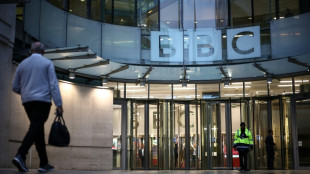
-
 Sinner dominates injury-hit Auger-Aliassime in ATP Finals opener
Sinner dominates injury-hit Auger-Aliassime in ATP Finals opener
-
Trump hails Syria's 'tough' ex-jihadist president after historic talks

-
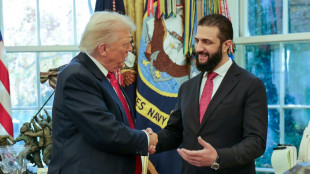 Syria's ex-jihadist president meets Trump for historic talks
Syria's ex-jihadist president meets Trump for historic talks
-
Top US court hears case of Rastafarian whose hair was cut in prison

-
 US mediator Kushner and Netanyahu discuss phase two of Gaza truce
US mediator Kushner and Netanyahu discuss phase two of Gaza truce
-
End to US government shutdown in sight as Democrats quarrel

-
 Trump threatens air traffic controllers over shutdown absences
Trump threatens air traffic controllers over shutdown absences
-
US to remove warnings from menopause hormone therapy

-
 UK water firm says 'highly likely' behind plastic pellet pollution incident
UK water firm says 'highly likely' behind plastic pellet pollution incident
-
Syria's ex-jihadist president holds historic Trump talks

-
 End to record-long US government shutdown in sight
End to record-long US government shutdown in sight
-
France's ex-leader Sarkozy says after jail release 'truth will prevail'

-
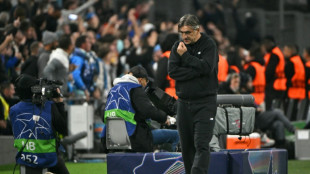 Atalanta sack coach Juric after poor start to season
Atalanta sack coach Juric after poor start to season
-
Trump threatens $1 billion action as BBC apologises for speech edit

-
 Gattuso wants 'maximum commitment' as Italy's World Cup bid on the line
Gattuso wants 'maximum commitment' as Italy's World Cup bid on the line
-
Indian capital car blast kills at least eight

-
 Deadly measles surge sees Canada lose eradicated status
Deadly measles surge sees Canada lose eradicated status
-
Brazil's Lula urges 'defeat' of climate deniers as COP30 opens

-
 Strangled by jihadist blockade, Malians flee their desert town
Strangled by jihadist blockade, Malians flee their desert town
-
US Supreme Court declines to hear case challenging same-sex marriage

-
 'Fired-up' Fritz sees off Musetti in ATP Finals
'Fired-up' Fritz sees off Musetti in ATP Finals
-
Injured Courtois set to miss Belgium World Cup qualifiers

-
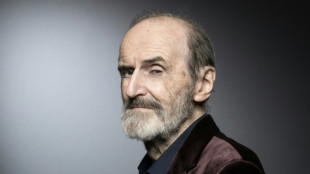 Bulatov, pillar of Russian contemporary art scene, dies at 92
Bulatov, pillar of Russian contemporary art scene, dies at 92
-
Fritz sees off Musetti in ATP Finals

-
 US strikes on alleged drug boats kill six more people
US strikes on alleged drug boats kill six more people
-
Sarkozy released from jail 'nightmare' pending appeal trial

-
 COP30 has a mascot: the fiery-haired guardian of Brazil's forest
COP30 has a mascot: the fiery-haired guardian of Brazil's forest
-
The Sudanese who told the world what happened in El-Fasher
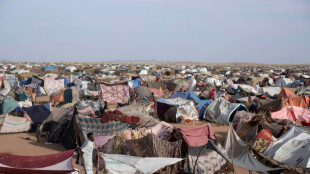
-
 Three things we learned from the Sao Paulo Grand Prix
Three things we learned from the Sao Paulo Grand Prix
-
ASC acquire majority share in Atletico Madrid
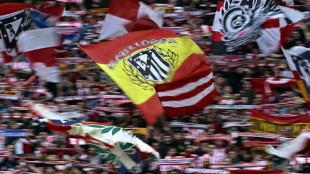
-
 Ferrari boss tells Hamilton, Leclerc to drive, not talk
Ferrari boss tells Hamilton, Leclerc to drive, not talk
-
Bank of England seeks to 'build trust' in stablecoins


Researchers dig up secrets of 'self-healing' Roman concrete
How have Rome's ancient aqueducts and architectural marvels such as the Pantheon, which features the world's largest unreinforced concrete dome, endured the test of time?
Researchers at the Massachusetts Institute of Technology (MIT) and other institutions believe they have uncovered the mystery of the durability of the 2,000-year-old structures -- self-healing concrete.
The secret lies in an ingredient of the ancient concrete used by the Romans that the researchers, whose findings are published in the latest edition of the journal Science Advances, said has been overlooked in previous studies.
The durability of the concrete used by the Romans has most frequently been attributed to the use of volcanic ash from Pozzuoli on the Bay of Naples, which was shipped across the Roman empire for construction.
But the researchers focused their attention on another component of the ancient concrete mix, small white chunks called "lime clasts."
"Ever since I first began working with ancient Roman concrete, I've always been fascinated by these features," said MIT professor of civil and environmental engineering Admir Masic, an author of the study.
"These are not found in modern concrete formulations, so why are they present in these ancient materials?"
The researchers said the lime clasts had been thought to be the result of "sloppy mixing practices" or poor-quality raw materials.
But they are in fact what gives the ancient concrete a "previously unrecognized self-healing capability."
"The idea that the presence of these lime clasts was simply attributed to low quality control always bothered me," said Masic.
"If the Romans put so much effort into making an outstanding construction material... why would they put so little effort into ensuring the production of a well-mixed final product?"
For the study, the researchers examined 2,000-year-old Roman concrete samples from the masonry mortar of a city wall in Privernum, Italy.
They found that a process known as "hot mixing" is what gave the concrete its "super-durable nature" in which the Romans mixed quicklime with water and the volcanic ash at high temperatures.
"The benefits of hot mixing are twofold," Masic said.
"First, when the overall concrete is heated to high temperatures, it allows chemistries that are not possible if you only used slaked lime, producing high-temperature-associated compounds that would not otherwise form.
"Second, this increased temperature significantly reduces curing and setting times since all the reactions are accelerated, allowing for much faster construction," he said.
It is the lime clasts that give the ancient concrete its "self-healing functionality," according to the research team, which also included scientists from Switzerland and Italy.
Tiny cracks in the concrete would tend to travel through the high-surface-area lime clasts and, when exposed to water, would recrystallize as calcium carbonate, filling the crack almost like glue.
"These reactions take place spontaneously and therefore automatically heal the cracks before they spread," said the researchers, who conducted tests using modern concrete and the ancient formula.
X.Karnes--AMWN



